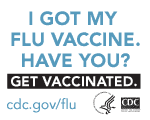What if I Was Exposed Outside the United States?

In many developing countries, dogs are the major vector of rabies; exposures to dogs in such countries may represent an increased risk of rabies transmission. Consultation with local health authorities in the country may be necessary to ascertain the risk presented by the type of animal exposed to. Additionally, the availability of rabies immune globulin and vaccine may be limited in some countries or the treatment regimen may differ (see below).
If traveling to a country where there is an increased incidence in rabies, especially in canine populations, rabies pre-exposure vaccination may be recommended. Rabies vaccination should be considered if you will be engaged in extensive outdoor exposure in rural areas or plan to handle animals. See our travel health section for more information.
Looking for more information regarding travel to China for the 2008 Olypmics? See the CDC site for Travel Health Tips for the 2008 Beijing Olympic Games
What if I Receive Treatment Outside the United States?
United States citizens who are exposed to rabies while traveling outside the United States in countries where rabies is enzootic might sometimes receive postexposure therapy with regimens or biologics that are not used in the United States, including purified vero cell rabies vaccine (Verorab ™, Imovax – Rabies vero ™, TRC Verorab ™), purified duck embryo vaccine (Lyssavac N ™), and different formulations of PCEC (Rabipur ®) or HDCV (Rabivac ™).
If postexposure prophylaxis is begun outside the United States using one of these regimens or biologics of nerve tissue origin, it might be necessary to provide additional therapy when the patient reaches the United States. State or local health departments should be contacted for specific advice in such cases. If titers are obtained, specimens collected 2–4 weeks after preexposure or postexposure prophylaxis would be considered adequate if they completely neutralize challenge virus at a 1:5 serum dilution by the RFFIT.
Purified equine rabies immune globulin (ERIG) has been used effectively in developing countries where HRIG might not have be available. The incidence of adverse reactions has been low (0.8%–6.0%), and most of those that occurred were minor. In addition, unpurified anti-rabies serum of equine origin might still be used in some countries where neither HRIG nor ERIG are available. The use of this anti-rabies serum is associated with higher rates of serious adverse reactions, including anaphylaxis.
Although no postexposure vaccine failures have occurred in the United States since cell culture vaccines have been routinely used, failures have occurred abroad when some deviation was made from the recommended postexposure prophylaxis protocol or when less than the currently recommended amount of RIG was administered. Specifically, patients who contracted rabies after postexposure prophylaxis did not have their wounds cleansed with soap and water, did not receive their rabies vaccine injections in the deltoid area (i.e., vaccine was administered in the gluteal area), or did not receive RIG around the wound site.
For more information also see the international WHO guidelines* for rabies postexposure treatment.
* Links to non-Federal organizations found at this site are provided solely as a service to our users. These links do not constitute an endorsement of these organizations or their programs by CDC or the Federal Government, and none should be inferred. CDC is not responsible for the content of the individual organization Web pages found at these links.
Content Source: National Center for Zoonotic, Vector-Borne, & Enteric Diseases (ZVED)

